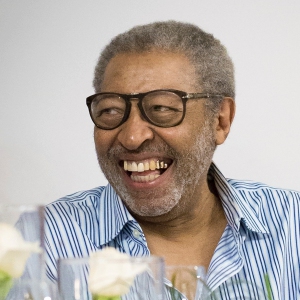Fanciers of a feather flock to Bird-a-thon event at Arcadia
| Published: 05-22-2023 7:50 PM |
EASTHAMPTON — Counting birds is no spring picnic. The feathery songsters don’t stay put for long — in the time it takes to write down “great crested flycatcher” you’ll likely miss two grackles and an oriole. It takes a team.
Outside Mass Audubon’s Arcadia Wildlife Sanctuary on a recent Friday night, one such team, numbering about 20, sat in a 25-foot grassy circle by the head of the All Persons Trail and recorded what they could see and hear.
As Audubon’s 40th annual Bird-a-thon kicked off at 6 p.m. with people going into the wild to count as many species as humanly possible in 24 hours, others opted for Birding in Place, a stationary, accessible birding event that seeks to make everyone feel welcome in the outdoors.
“It’s for people of all backgrounds and abilities, or for those who don’t think of themselves as a stereotypical birder,” said Carolyn Cushing, development manager for Arcadia and Easthampton’s poet laureate.
The event serves as a fundraiser for Audubon and its ongoing mission to “protect bird-friendly landscapes, increase access to nature and environmental education, and mobilize to combat climate change.”
As one West Region team member put it on her donation page: “I am raising money for Bird-a-thon because I believe that nature needs heroes now more than ever.”
It is also, make no mistake, competitive birding.
“We’re competing for the County Cup!” Cushing said. “We’ve won it before but it’s over in the Berkshires — we want to win it back!” The Birding in Place crew is vying for the Sitting Duck Award. “That’s over in the Southeast — we lost both last year!” cried Cushing, adding, with a laugh, “OK, I tend to get obsessive.”
Article continues after...
Yesterday's Most Read Articles
The idea is that you can only count what you can see or hear from inside that circle. If you need to depart the circle to, say, freshen up, and a nesting pair of rose-breasted grosbeaks whiz right by your ear in mid-freshening, well, my friend, how nice for you, but we can’t use it.
“The circle is something that birders have been doing for a while,” Cushing said. “We created it here at Arcadia in 2021. We could continue to be competitive, but make it work for everyone.”
Bragging rights aside, Bird-a-thon’s aim is to get a handle on how the birds of Massachusetts are doing in the midst of climate change, and which species might be at risk and need attention.
The great south-to-north migration patterns are already changing, according to recent Audubon reports. “About 30% of the birds in the state are going to be negatively impacted by climate change and possibly 40% will be moving out of our range by the end of the century,” said Brittany Gutermuth, Arcadia’s climate change educator who was at the event with daughter Willow, 11. “And then 40% will be moving into the range … because our conditions are becoming more like southern.”
Willow, who practically grew up at Arcadia, has enjoyed both versions of Bird-a-thon. “I had a lot of fun hiking and learned a lot of new birds. I don’t have a favorite; I like all of them,” she said. She also believes her generation is the one that will solve climate change.
“I hope so,” said botanist Janet Bissell of Westhampton, who’s volunteered at Arcadia for decades. “I have faith in the young generation. People like Willow and my granddaughters who are about her age, do give me hope. It’s never too late. There’s stuff we can do, all of us, from the ground up.”
She trained her binoculars on an eastern bluebird on a fencepost and spoke of her days with the Monday Morning Birders. Favorite siting? The brushstroke plumage of a quetzal, Costa Rica. “Wonderful,” she said.
“There’s something up there,” pointed someone in the circle, and 20 pairs of binoculars shifted direction as if part of the same mechanism.
“This is the ultimate in community science,” said teacher and naturalist Laura Beltran, marker in hand, ready to write the name of each bird identified on an easel-mounted chart. A bluebird, a robin, an oriole. At 6:04, the first pine warbler is recorded, and we are off.
Although a few of the birding-in-placers are known to participate in the more vigorous bird-counting in the wild, this program offers something as tangible.
“It’s so interesting to see the purpose of something like this,” said Paula, a retired nurse from Leeds, “counting the variety of species that can be seen if you’re in one position, versus going out and walking trails and fields.”
She knows a bit about those trails. “My mom was a big birder. She was at a library association meeting in somebody’s living room, very serious, everyone talking about the budget — all of a sudden she jumps up, pointing out the window: ‘A pileated woodpecker!’ Broke up the whole meeting. That was my mom.”
Someone identifies the song of a catbird and Beltran adds it to the list.
“It’s a retirement project for me,” said Harlee Strauss of Leeds, “but I’m becoming increasingly addicted. It has me traveling to interesting cultural places and teaches me new skills. But I have a missed bird. The cock-of-the-rock. I went all the way to Ecuador to see him. I didn’t, so I need to go back.”
About missed birds, the one that has always eluded the reporter is the scarlet tanager, something so lipstick-red you’d spot it a mile away, but no. And you wouldn’t have to sail to Costa Rica, mind you, they’re part of this Atlantic Flyway migration right now, as always.
“Where we’re standing right now would be a great spot,” said Derek Allard, Hampshire Bird Club president, who saw one just the other day, after a talk, “posing on a tree right outside the center.” The reporter sighs.
“Scarlet tanagers? They’re around,” said Harlee Strauss. “Come to Birding for Everyone at the end of the month. I’ll bet you’ll see one.”
The reporter arches an eyebrow. But that’s the funny thing about birding: Maybe you’ll never see a scarlet tanager, but you’ve probably been listening to them since forever, what one noted birder likens to a “robin with a cold.”
Something chirps above and heads are cocked.
“I’m trying to learn to bird by ear but I’m terrible at it,” said Strauss. “I’m guessing goldfinch?”
A black-capped chickadee, the state bird itself, gets a nice reaction from the crowd, who maybe weren’t expecting to see one.
“They were everywhere,” Allard said of the ubiquitous bird. “They used to be one of our more prominent birds, but with climate change … they head north and we don’t see them as much.” (Conveniently, they’re also the state bird of Maine.)
“Listen!” came a voice from the far end of the circle. “It’s a red-bellied woodpecker!” Beltran happily adds it to the list. Who knew that the rat-a-tat-tat of drilling woodpeckers differs with the species?
“The red-bellied woodpecker, another southern bird that’s becoming a lot more common,” said Allard with a smile. “Twenty years ago they were not here at all.”
The eastern bluebirds were a hit. Many of us have seen bluebird houses in a meadow, but how many bluebirds have we actually seen poking out? Here, the houses are lived-in and the bluebirds seem like family. One rust-breasted male landed high on the peak of a distant pavilion and preened. Beltran trained Audubon’s Mark telescope on the creature and folks took turns looking through it as if it were a discovered planet, the blue on its feathers iconic as a midday sky.
“I don’t know, I like birds,” said Pelle, an exuberant teen and veteran Bird-a-thoner in a Northampton Fencing T-shirt. “It’s actually a club, according to the school, because we haven’t managed to fill out the paperwork yet,” he said with a chuckle, careful to stay in the circle as he rushed about, alternating the view in his binoculars with the one in Audubon’s telescope.
There’s definitely that sense of competition in the air.
“Do I have to admit it, yes!” said Lorraine Golal of Westfield with a laugh, sitting with her husband and kayaking partner Joseph, checking the e-Bird alerts on her phone. “Sometimes I can’t believe we’re doing this,” she said, of their birding life and the thrill of spotting an unusual bird.
“We’re from the Bronx,” said Joseph. “The only birds we saw were sparrows and pigeons.”
Their missed bird? Believe it or not, the scarlet tanager. “Nope, not once,” Lorraine lamented.
“We saw a snowy owl, though, the Holy Grail of birdwatching,” Joseph said. “Plum Island, in the marshes.”
When Janet Bissell heard the chatter about tanagers, she amended her earlier awe for the Costa Rican quetzal. Twenty years ago she was on Northampton’s Damon Road, miserable, stuck in a legendary Damon backup, when she rolled down the window for some air and maybe some deliverance, and her first scarlet tanager appeared, regally, it seemed, perched atop a light pole as if lit from within.
“I think it was fate — I don’t think anyone saw it, it was just that beautiful bird and me. It ended up making me feel a whole lot better.”
Her favorite siting Friday night?
“So unexpected — a northern rough-winged swallow,” she said. “A common bird, but just not in this area.”
Though the Birding in Place ended at sundown, many of these same teammates will be right back in that circle for the predawn philharmonic, counting like mad. The payoff? A rare siting of a solitary sandpiper at the vernal pool. “We got the species list up to 49!” said Beltran. Will it be enough recapture the Sitting Duck award?
TBA.
After leaving to record the whip-poor-will count on Mount Tom, Allard spent nearly all of Saturday chasing the call of birds from Hadley to Amherst to the Meadows in Hamp with partner Katie Doe. “We always try to get to 100,” he said. “Bird-a-thon is a little more go-go-go than everyday birding.”
They got 101, including a swooping osprey and a sora. They could have had more, but sometimes the very thing that got you into birding in the first place can thwart you in competition. “You can lose 45 minutes just watching,” Allard said.

 William Strickland, a longtime civil rights activist, scholar and friend of Malcolm X, has died
William Strickland, a longtime civil rights activist, scholar and friend of Malcolm X, has died Advancing water treatment: UMass startup Elateq Inc. wins state grant to deploy new technology
Advancing water treatment: UMass startup Elateq Inc. wins state grant to deploy new technology New Realtor Association CEO looks to work collaboratively to maximize housing options
New Realtor Association CEO looks to work collaboratively to maximize housing options Northampton man will go to trial on first-degree murder charge after plea agreement talks break down
Northampton man will go to trial on first-degree murder charge after plea agreement talks break down 
